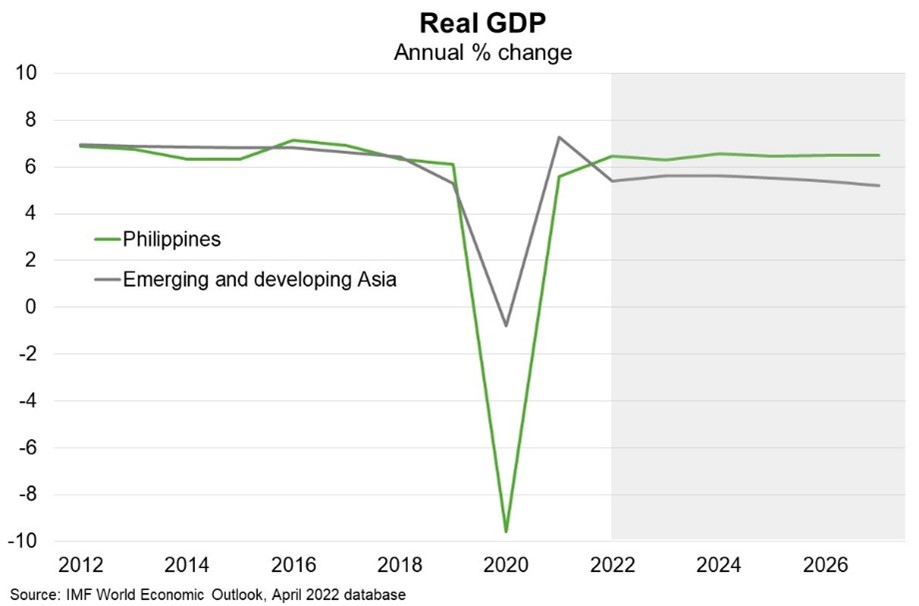Philippines—New President to maintain infrastructure investment drive
Ferdinand “Bongbong” Marcos Jr., son of former President Marcos (1965-1986), will succeed Rodrigo Duterte as President of the Philippines following a landslide election victory on May 9. Marcos’s running mate Sara Duterte, daughter of Rodrigo Duterte, will serve as the next Vice-President. The incoming government faces an economy that is growing solidly—real GDP climbed 8.3% year-on-year in Q1 2022, accelerating from 7.8% in Q4 2021—but also immediate challenges relating to curbing rising inflation and ensuring inclusive economic recovery as many micro, small and medium enterprises remain closed following the pandemic.
Although Marcos Jr. has yet to detail his policy priorities, the incoming administration will likely continue policies from the outgoing Duterte administration. That means a continued commitment to enhancing the business climate through increasing infrastructure investment and attracting more foreign investment. On the latter, in early 2022, President Duterte enacted policies to allow full foreign ownership in infrastructure assets and lowered barriers to foreign investment in the retail sector. In large part because of this ongoing and gradual market liberalisation, the Philippines has been able to register consistently healthy economic growth on average for over a decade. Efforts to increase infrastructure investment is also key to the country’s robust medium term growth prospects (Chart).
The Philippines’ ongoing infrastructure drive presents opportunities for Australian design, construction, finance and energy companies in support of development of new roads, railways, airports, ports, energy and utilities, oil and gas pipelines and water infrastructure. Goods exports to the Philippines rose sharply to $4.1 billion in 2021, from an average of $2.3 billion in the prior five years, as bilateral trade recovers from the pandemic.


